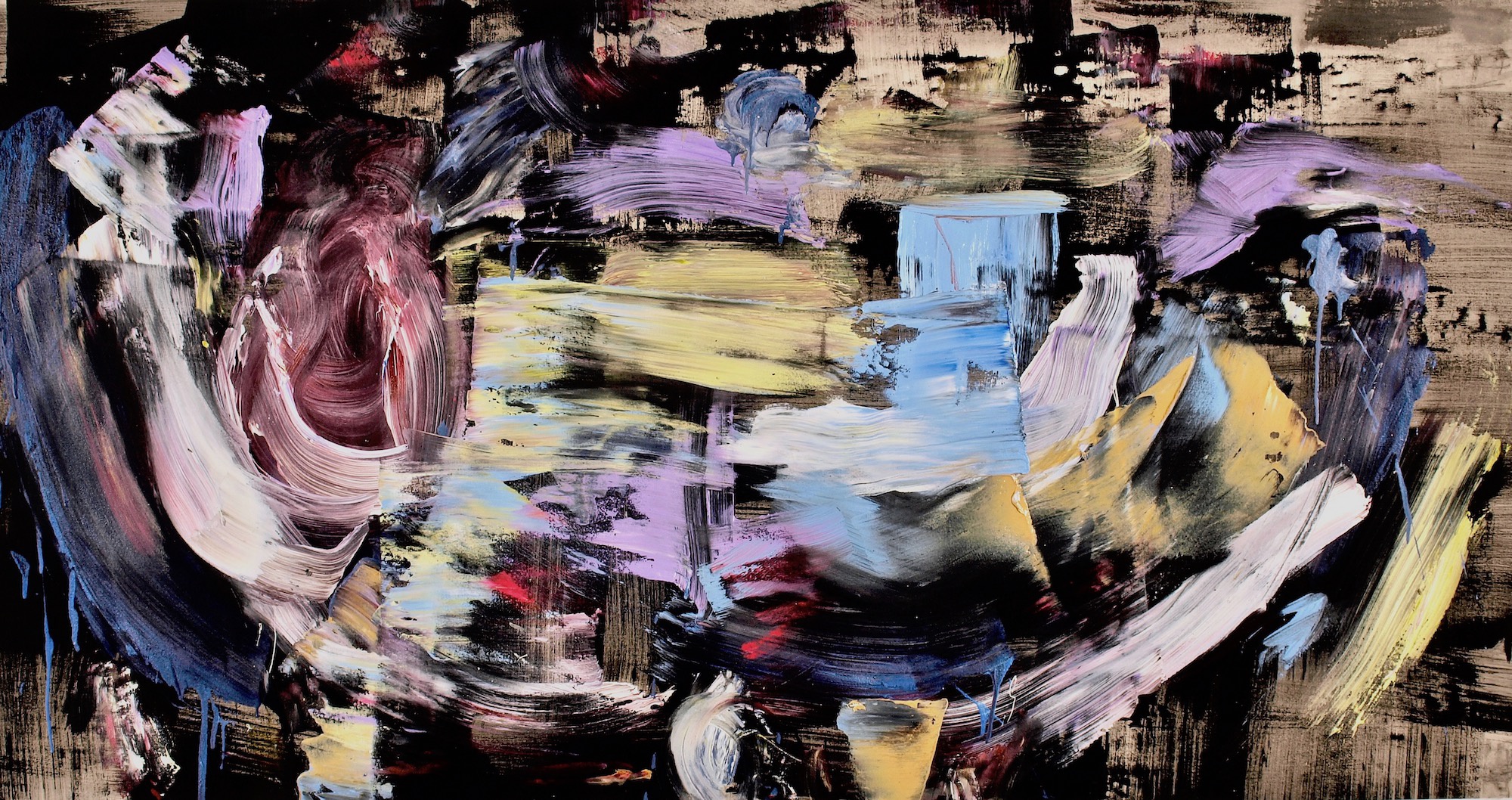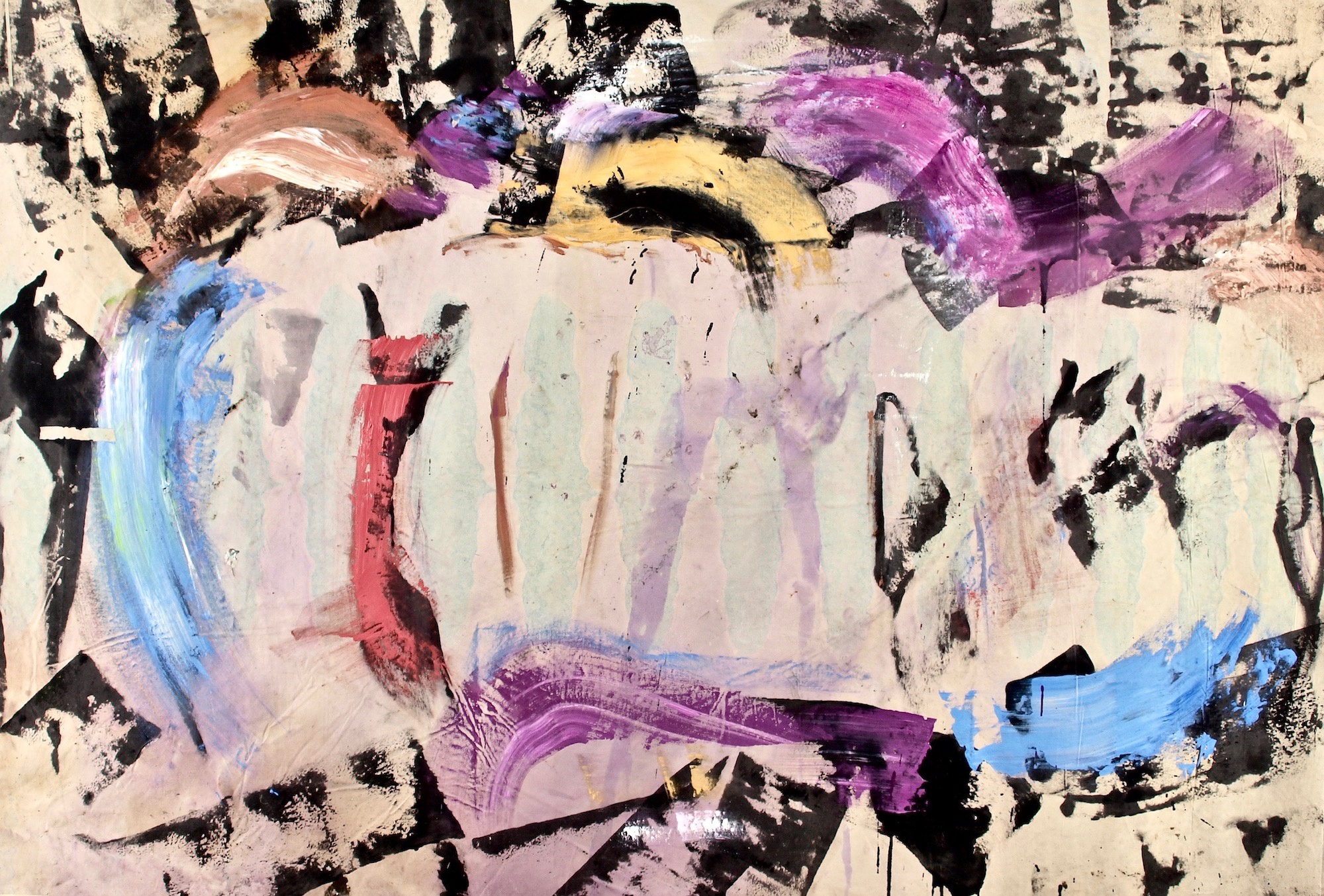On “Life in Action,” recent paintings by Francine Tint at the National Arts Club.
The Abstract Expressionist revolution in painting occurred from the mid-1940s to the mid-1950s, centered in New York City. Artists escaped the controls of Cubism and Picasso’s sense of form, the literary conceits of Surrealism, and the political constraints of Social Realism.
Disencumbered of these carapaces and relieved by the end of World War II, artists were freed to search for the essential power of visual abstract form—to let loose its intellectual, emotional, and poetic potential. The mood was boundless creativity.

Francine Tint, Homage to Artemisia, 2021, Acrylic on canvas. Photo: the National Arts Club.
Yet, unbounded creativity was unbearable for some. Success for Ab-Ex artists opened the doors for commercial predation that sought a range of styles more easily performed. A new generation of art academics found fast-food for thought. But the potency of Ab Ex continued to attract new artists. They saw it not as a period style, but as a universal impetus unleashing a greater creative process and a new vocabulary of form.
One such champion of the fundamental traditions of creativity in the Ab-Ex movement is the dauntless Francine Tint, twelve of whose brisk paintings now engage us in the galleries of the National Arts Club.1
Light glows from these paintings, and their wide expanses of dominant color grasp the viewer’s attention. But soon, broad and unfettered brushstrokes emerge as the most salient quality of Tint’s art. And what these brushstrokes—which are at once very wide lines and independent linear shapes—add up to is structure. Sturdy structure forms the heart of these paintings, but not just sturdy structure—exclamatory structure. The physical and emotional freedom of her brushstroke carries passion. The structure is the heart, the light and color are the soul, and the passion is the blood pulsing through it all.

Francine Tint, Voltaire in Love, 2020, Acrylic on canvas. Photo: the National Arts Club.
Voltaire in Love (2020) is the most powerful and complex example of Tint’s expressive structure. A nearly empty middle is surrounded by broad, insistent brushstrokes, each its own color—yellow, magenta, blue, red—creating a tension of color interaction across the painting. One big, off-center red stroke interrupts the empty area, introducing its own tension and preventing the total enclosure of the inner form. The entirety of the empty inner space is then surrounded by a different pattern, a staccato rhythm of short black and white brushstrokes that contrasts with the inner structure’s vibrant color. The scale of these brushstrokes retains the same feeling of the energy of the artist’s arm as in the inner space.
Homage to Artemisia (2021) takes elements used in Voltaire in Love and reassembles them into a less rigid structure that barely emerges from the interweaving of the strokes. Its interior of electric colors is again surrounded by choppy black strokes, but this time they form more of a ground on which the colored strokes play.
In Bitter Blue (2020) and Wintergarden (2021), individual vertical strokes of blue clearly announce a structure. Compositions that would otherwise appear plain are enlivened in both instances by surprising additions. In Bitter Blue, scuffy black verticals take on a charcoal-sketch immediacy, and in Wintergarden, a sudden horizontal green roadway rides over everything, establishing a sense of order. These paintings, especially Bitter Blue, bring to mind Jackson Pollock’s monumental Blue Poles (1952), a daring reference by Tint.

Francine Tint, Vernal Equinox, 2021, Acrylic and charcoal on canvas. Photo: the National Arts Club.
Free-flowing, assertive, broad brushwork is emblematic of much of Abstract Expressionism—the scale of the arm’s sweep rather than the twist of the wrist, hand, or fingers taking precedence—but not all of Tint’s paintings depend on it. The finely sketched thin black lines in Vernal Equinox (2021) are perfectly balanced against the wide but light-colored brushstrokes. These are predominantly horizontal and orderly in contrast to the black charcoal-like lines darting every which way.
In Gravity’s Rainbow (2022), as in some of Tint’s other paintings, color supersedes structure as the strongest element of the painting. But it still needs structure—here provided especially by three black smears—to keep the color under just enough control.
At first, one might find Tint’s art to be about the immediacy of the paint hitting the canvas, as she lets her hand and her subconscious, in tandem with the physical quality of the paint, guide her. Complex beauty is to be found in this: a long-lived culture of such “painterly” painting includes Velázquez, Titian, and El Greco, a tradition later joined by the Impressionists and Post-Impressionists. Abstract Expressionism made this technique independent of the need to depict a narrative scene. Francine Tint has mastered this form and adds to this great inheritance.
“Francine Tint: Life in Action” opened at the National Arts Club on November 7, 2022, and remains on view through December 2, 2022.


